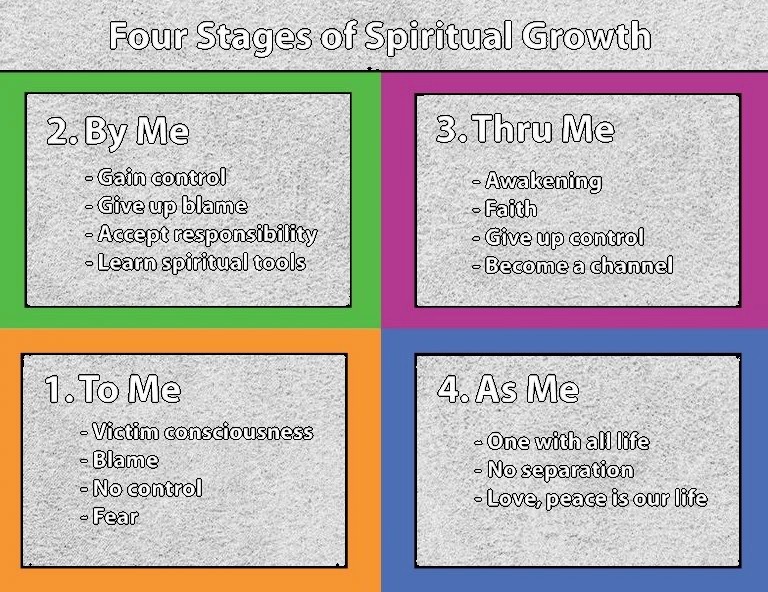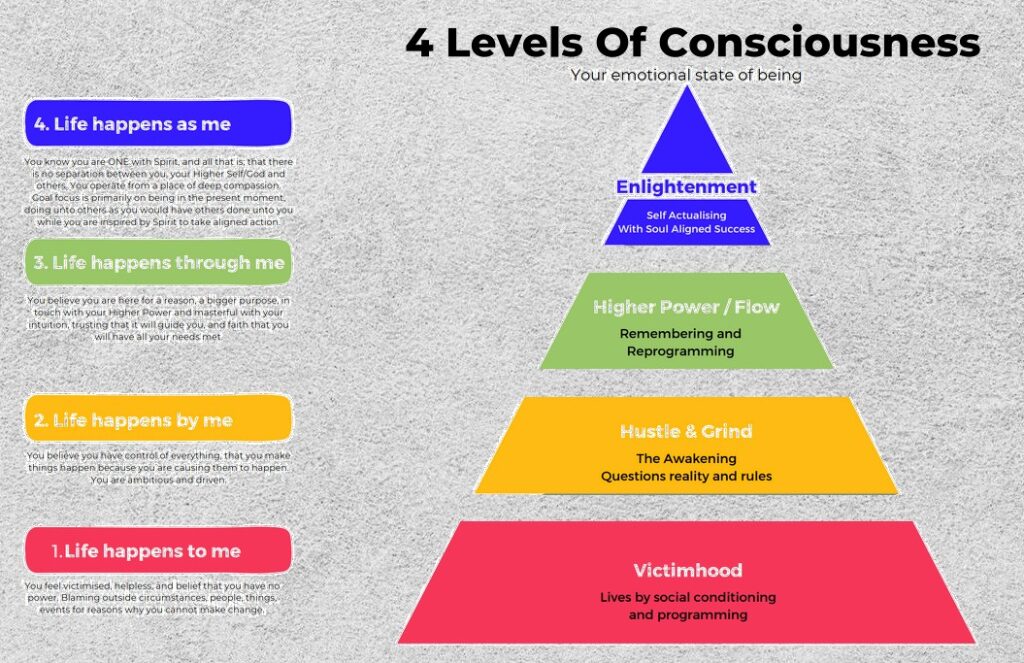Stages of Spiritual Development: Understanding the “To Me, By Me, Through Me, As Me” Model
Spiritual growth is a transformative journey, full of ups and downs, revelations, and epiphanies. Many thinkers and spiritual leaders have attempted to chart this progression, to provide a roadmap for seekers. One such model, both insightful and compelling, is the “To Me, By Me, Through Me, As Me” framework proposed by Michael Bernard Beckwith, the founder of the Agape International Spiritual Center.

The Landscape of Spiritual Consciousness
Each stage in this model represents a distinct perspective on life, a unique lens through which we view our relationship with the world, the universe, and the divine. Let’s explore these stages in depth:
1. To Me (Victim Consciousness)
In the first phase of spiritual evolution, many individuals feel that life is predominantly happening to them. This perception births what’s termed ‘victim consciousness’.
Imagine standing in the face of an advancing tide, feeling the overwhelming force of waves, unable to control or change the water’s surge. This sense of powerlessness is a hallmark of the “To Me” stage. People feel buffeted by external forces – be they circumstances, events, or the whims of others.
It’s not uncommon for feelings of resentment, blame, or self-pity to surface during this phase. The world can seem hostile, indifferent, or uncaring, leading to questions like, “Why is this happening to me?”
2. By Me (Manifestor Consciousness)
As the seeker progresses on their spiritual journey, there’s a transformational shift. The individual transitions from feeling powerless to recognizing their power to influence and shape their reality. This stage is aptly termed ‘manifestor consciousness’.
The “By Me” perspective embodies empowerment. The individual begins to grasp that their actions, thoughts, intentions, and beliefs can directly influence outcomes. They start to see themselves as creators, shaping their destiny with determination and will. While this stage is an uplifting move from victimhood, it can also bear the burden of immense responsibility. There might be a temptation for ego-driven actions, where the individual feels they are the sole orchestrator of their achievements.
3. Through Me (Channel Consciousness)
This stage marks a deeper transformation in spiritual understanding. The “Through Me” perspective encompasses a sense of surrender and an understanding that there’s a force greater than oneself at play.
People in this phase view themselves as channels or instruments. It’s akin to being a flute through which the universe or a higher power plays its melody. The individual realizes they aren’t the sole actors on the stage of life. Instead, they are part of a grand symphony, where the universe operates through them.
This is a realm of trust, surrender, and humility. The weight of being the sole creator lifts, replaced by a trust in the flow of life and a sense of collaboration with a higher will.
4. As Me (Being Consciousness)
In the final stage of Beckwith’s model, the barriers between the self and the universe dissolve. Here, in the “As Me” perspective, there’s a profound realization of oneness with everything that is.
This unity consciousness doesn’t see a division between the individual and the divine. The seeker recognizes the divine within themselves, within others, and within all of existence. Every experience, emotion, and moment is imbued with a sense of sacredness and profound connection.
Cycling Through Consciousness
While the model suggests a linear progression, spiritual journeys are seldom straight paths. It’s not unusual for individuals to oscillate between stages, revisiting previous perspectives before advancing. Life events, personal challenges, or profound revelations can trigger these shifts.

Conclusion
Michael Bernard Beckwith’s “To Me, By Me, Through Me, As Me” model provides a powerful lens to understand the nuances and stages of spiritual evolution. As with any roadmap, its true value lies in its application. For seekers, understanding where they currently stand can offer clarity and guidance for the journey ahead. For those guiding others, this framework provides a tool to empathize and aid those navigating their path to spiritual enlightenment.
For a deeper dive into these stages and Beckwith’s teachings, one can explore his books and lectures or tap into resources from the Agape International Spiritual Center. The journey of spiritual growth is personal, intricate, and profound. Frameworks like this serve as guiding lights, illuminating the path of discovery and connection.